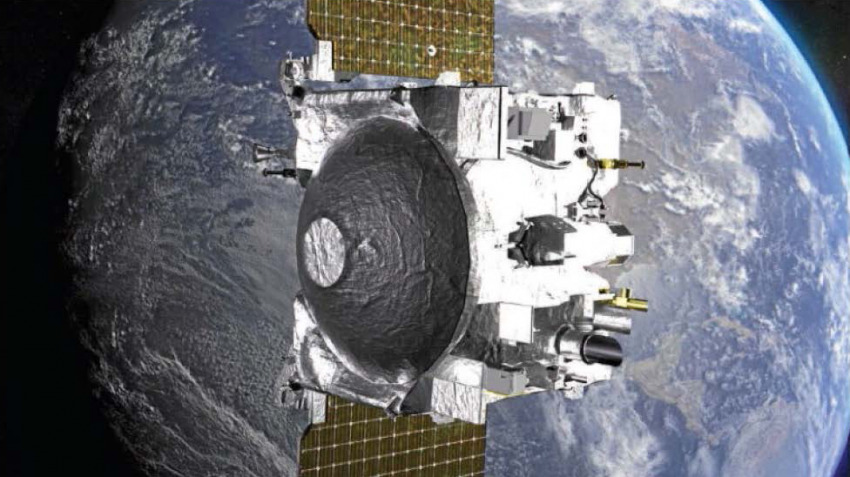
Digital Terrain Models Zero in on Martian Surface
Realistic, to-scale renditions of otherworldly landscapes, created by a team at the university's Lunar and Planetary Laboratory, help lay the groundwork for ongoing and future Mars exploration campaigns.Digital Terrain Models Zero in on Martian Surface
×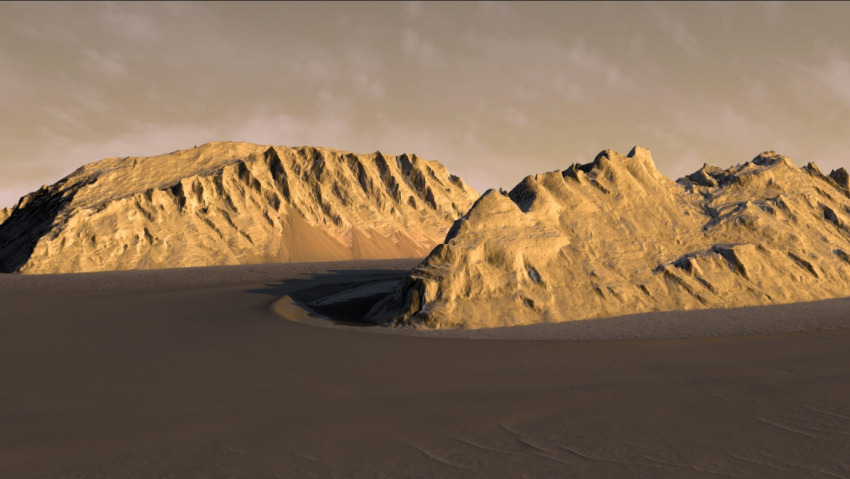
By Penny Duran, NASA Space Grant Science Writing Intern, University Communications - October 25, 2023
Picture soaring over a rugged canyon on another world, strapped into an imaginary hang glider. Or getting a bird's eye view of craters that stretch on for miles and following along the same paths as the robotic rovers that have explored the surface of Mars. All of this is possible – virtually – thanks to specialists at the University of Arizona's Lunar and Planetary Laboratory.
A team at the Lunar and Planetary Laboratory has created realistic terrain models of Mars' surface using specialized software and high-resolution images taken from space. Known as digital terrain models, or DTMs, these renderings allow mission planners to examine landing sites for landers and rovers and scout routes across the alien terrain, laying the groundwork for ongoing and future Mars exploration campaigns.
Creating a DTM begins with high-resolution images taken with the High Resolution Imaging Science Experiment, or HiRISE, a UArizona-led camera instrument aboard NASA's Mars Reconnaissance Orbiter, or MRO, which has captured detailed views of the red planet's surface since 2006. Unlike a consumer-grade digital camera, HiRISE does not take "snapshots" of a scene – rather, it relies on a method called push-broom photography. As the orbiter passes over Mars, the camera takes a long scan, producing pictures used to create DTMs, which are topography maps and capture the shape of planetary surfaces.
 Rocky outcroppings are visible in this digital terrain model of Martin Crater on Mars created by Kris Akers at the Lunar and Planetary Laboratory. DTMs offer faithful renditions of the topography and surface features of planetary bodies and help mission planners pick safe routes for rovers and landers, for example.Kris Akers, HiRISE, Lunar and Planetary Laboratory
Rocky outcroppings are visible in this digital terrain model of Martin Crater on Mars created by Kris Akers at the Lunar and Planetary Laboratory. DTMs offer faithful renditions of the topography and surface features of planetary bodies and help mission planners pick safe routes for rovers and landers, for example.Kris Akers, HiRISE, Lunar and Planetary Laboratory
"DTMs take a long time to make," says HiRISE outreach coordinator Ari Espinoza, "so the fact we've been able to crank them out in such high numbers underscores the value that HIRISE still has – especially because no one else is making such high-resolution images of Mars' terrain."
HiRISE can resolve objects as small as three feet, about the size of a coffee table. Thus, HiRISE can reveal potential snags and obstacles in landscapes that may look deceptively easy to navigate when viewed from a distance. The sheer amount of DTMs from UArizona has made them a sought-after resource used to examine changes in Mars' geology, find safe landing sites and navigate rover routes.
For each DTM, two images of the same area are necessary. HiRISE captures each image on a separate orbit and at a different angle, and combining the images results in a so-called stereo pair.
Essentially, the set of images making up a stereo pair mimics the left eye and right eye, creating a sense of depth, explains HiRISE scientist and DTM lead Sarah Sutton.
"When you look at the images together with special glasses – like the red-blue glasses often handed out at science fairs – it allows your brain to make a 3D image," she says.
The stereo pairs are then used to produce the DTMs – an intensive process that involves a coding component, examining the actual images taken by HiRISE and editing the DTMs.
The program launched in 2008 with Sutton being the sole producer of DTMs. Thanks to a growing team that includes student workers, the effort is on track to complete more than 150 for this year alone, a record. September saw the completion of a major milestone when the number of total DTMs passed the 1,000 mark.
"Production has gotten a lot faster because we have better targeting of stereo pairs, more automation in our process, and we are continually refining our methods," Sutton says.
Editing especially requires a lot of hands-on work. For example, stark differences in lighting, such as a dark shadow covering one side of a crater, can cause errors that need to be evaluated by a human pair of eyes.
 The UArizona-led HiRISE camera instrument aboard NASA's Mars Reconnaissance Orbiter has taken high-resolution images of Mars since 2006.JPL-Caltech/NASA
The UArizona-led HiRISE camera instrument aboard NASA's Mars Reconnaissance Orbiter has taken high-resolution images of Mars since 2006.JPL-Caltech/NASA
"In such cases, the computer doesn’t register what is actually on the surface, and so it makes things up that we have to correct manually," says Branden Gosse, a recent UA graduate who now works as a research technician for HiRISE.
During HiRISE's repeated passes over the same area, it sometimes witnesses changes on the Martian surface that provide valuable scientific clues about dynamic processes, Sutton explains.
"We can observe seasonal changes in frost cover or dunes moving across the land," she says. "That's only possible with DTMs, since they correct for differences due to the individual images being taken from slightly different optical perspectives."
On top of depicting surface changes, DTMs help Mars rovers navigate terrain that could be dangerous. While small, sharp rocks are too small for DTMs to resolve, they can effectively display hazardous sand dunes that rover wheels can get stuck in. In collaboration with cameras aboard rovers, DTMs can even enable almost real-time navigation of rovers' routes.
Making space science tangible
The feats accomplished through DTMs have been made possible through the scores of UArizona students who have produced them over the years, culminating in 1,000 DTMs made from a pool of almost 8,000 stereo pair images. Although DTM production has a steep learning curve, the benefits are immense and planetary science gets more tangible, according to Sutton.
"DTM production gives students the opportunity to see how space science really works outside a classroom," she says.
Simultaneously, the HiRISE team learns from students’ new perspectives, and students learn how to work with the software, according to Max Cabrera, a student worker majoring in physics and astronomy.
"Last semester, there would be this overlap where I’d use the techniques from DTM production in class and vice versa," he says. "There was this nice back and forth that helped me hone my edge for coding."
Even with a long history under their belt, DTMs cover a very small percent of Mars' surface – less than 1 or 2 percent – which highlights the extent of contributions HiRISE can continue to make for as long as the hardware lasts. With students and scientists hard at work in the DTM lab, the topography maps are bound to secure the success of Mars missions – and possibly even human space exploration in the not-too-distant future.
According to Alfred McEwen, the mission’s principal investigator, "DTMs are critical for finding future landing sites for humans or robots as well as monitoring safety and what is happening on the surface."
"Researchers for other moons and planets wish they had something like HiRISE and the MRO orbiting their field of study," McEwen says. "High-resolution images are highly desired pretty much anywhere that you have a solid surface."
Aside from HiRISE, McEwen serves as deputy principal investigator for the Europa Imaging System, or EIS, on NASA's Europa Clipper spacecraft, scheduled for launch next year. Similar to the flyovers over Mars' surface, the Clipper mission will involve studying Jupiter's moon Europa, the sixth-largest moon in the solar system, during a series of flybys.
"As the spacecraft orbits Jupiter and makes close passes to Europa, we hope to get the same kind of stunningly beautiful pictures of this icy world as we do of Mars with HiRISE," McEwen says.

UArizona Researchers Probe How a Piece of the Moon Became a Near-Earth Asteroid
An interesting pathway could have led the moon fragment to reach Earth's orbital space.UArizona Researchers Probe How a Piece of the Moon Became a Near-Earth Asteroid
×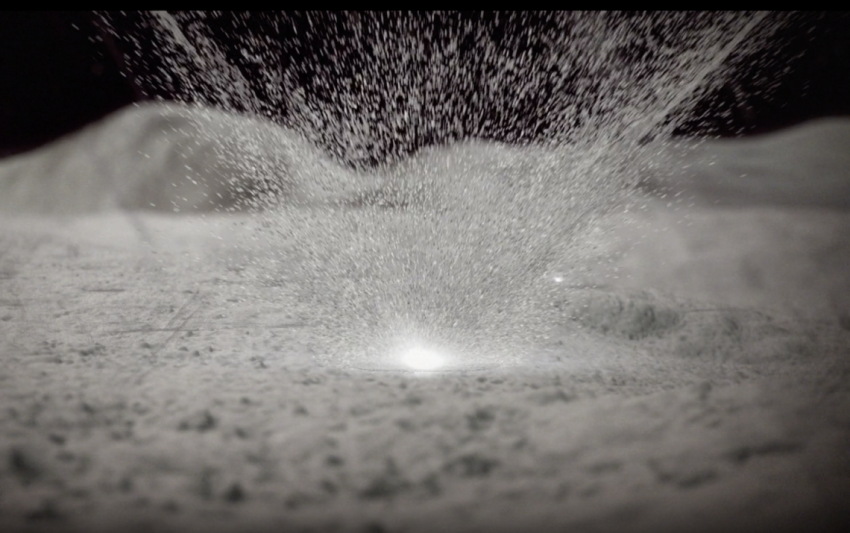
By Niranjana Rajalakshmi, University Communications - October 23, 2023
In 2021, a team of University of Arizona astronomers suggested that a recently discovered near-Earth asteroid, Kamo`oalewa, could be a chunk of the moon. Two years after the striking discovery, another UArizona research group has found that a rare pathway could have enabled this to happen.
So far, only distant asteroids from beyond the orbit of Mars have been considered a source of near-Earth asteroids, said Renu Malhotra, Regents Professor of planetary sciences and a senior author on the paper.
"We are now establishing that the moon is a more likely source of Kamo`oalewa," Malhotra said.
The implication is that many more lunar fragments remain to be discovered among the near-Earth asteroid population. The study was published in the journal Communications Earth & Environment.
UArizona researchers decided to study Kamo`oalewa for two reasons. Kamo`oalewa is uncommon in that it is Earth's quasi-satellite, a term used for asteroids whose orbits are so Earth-like that they appear to orbit Earth even though they actually orbit the sun.
The other peculiar aspect of Kamo`oalewa is its longevity, said Jose Daniel Castro-Cisneros, the study's lead author and a graduate student in the Department of Physics. Kamo`oalewa is expected to remain as a companion of the Earth for millions of years, which is its remarkable feature, Castro-Cisneros said, unlike other known objects that stay in these very Earth-like orbits only for a few decades.
Aaron Rosengren, a former assistant professor in the Department of Aerospace and Mechanical Engineering, in the College of Engineering, was part of the study. Rosengren is now at the University of California, San Diego.
The 2021 study found that Kamo`oalewa's spectrum was unlike that of other near-Earth asteroids but matched most closely that of the moon. Based on this, the team hypothesized that the asteroid could have been ejected from the lunar surface as a result of a meteoroidal impact.
In the new study, Malhotra and her team wanted to determine the feasibility for a knocked-off piece of the moon to get into this quasi-satellite orbit – a phenomenon that is quite unlikely, Malhotra said. Moon fragments that have enough kinetic energy to escape the Earth-moon system also have too much energy to land in the Earth-like orbits of quasi-satellites, she said.
With numerical simulations that accurately account for the gravitational forces of all the solar system's planets, Malhotra's group found that some lucky lunar fragments could actually find their way to such orbits. Kamo`oalewa could be one of those fragments created during an impact on the moon in the past few million years, according to the study.
Throughout its history, the moon has been bombarded by asteroids, which is evident in the numerous impact craters preserved on its surface, explained Malhotra. Impact craters are created when asteroids or meteorites crash into the surface of a planet or the moon. Impacts cause lunar material to be ejected from the moon's surface, but most of that material usually falls back on the moon, she said.
Some of the ejected materials fall on Earth, and that's how we get meteorites from the moon, Malhotra said. But a small fraction could escape the gravity of both the moon and the Earth and end up orbiting around the sun like other near-Earth asteroids. Numerical simulation suggests that Kamo`oalewa could be one of even tinier fractions that gained entry into the hard-to-reach Earth's co-orbital space.
The study's findings could help understand more about near-Earth asteroids, which are considered a hazard to Earth, Malhotra said. More detailed studies of Kamo`oalewa and determining this asteroid's origin in a specific impact crater on the moon will provide useful insights on impact mechanics, she said.
In the future, Castro-Cisneros said the team is planning to identify the specific conditions that allowed the orbital pathway of Kamo`oalewa. The group is also aiming to work on determining Kamo`oalewa's exact age, he said.
"We looked at Kamo`oalewa's spectrum only because it was in an unusual orbit," Malhotra said. "If it had been a typical near-Earth asteroid, no one would have thought to find its spectrum and we wouldn't have known Kamo`oalewa could be a lunar fragment."
UArizona Researchers Probe How a Piece of the Moon Became a Near-Earth Asteroid
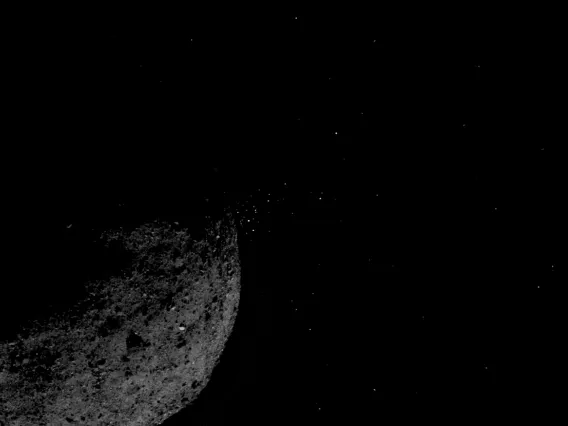
UArizona Launches Arizona Astrobiology Center to Unlock the Mysteries of Life in the Universe
The center will bring together students and faculty from across campus and disciplines to unravel the enigma of life's beginnings and our place in the cosmos.UArizona Launches Arizona Astrobiology Center to Unlock the Mysteries of Life in the Universe
×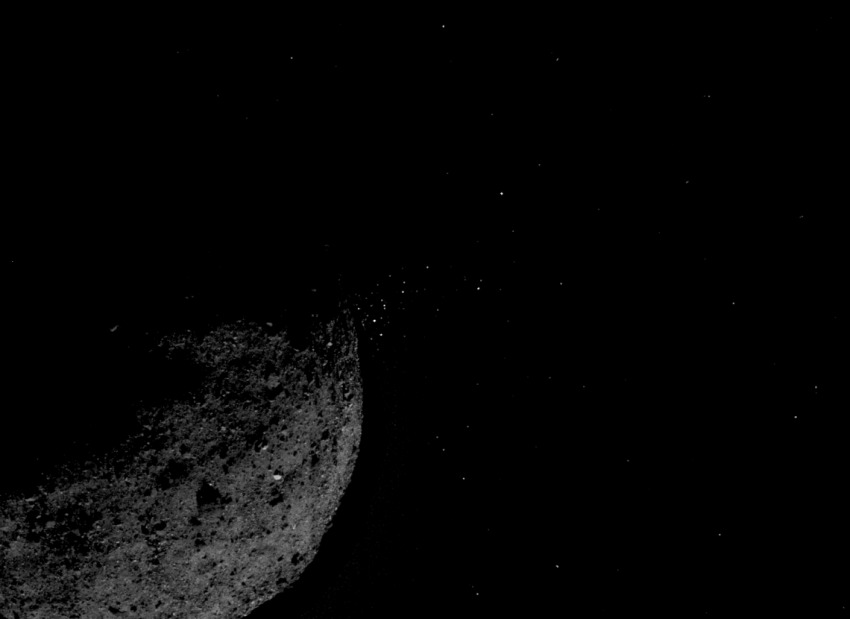
By Mikayla Mace Kelley, University Communications - October 17, 2023
The University of Arizona on Tuesday announced the opening of the Arizona Astrobiology Center, which brings together more than 40 faculty members from four colleges and 13 disciplines to conduct cutting-edge astrobiological research, train diverse future leaders and encourage collaborative dialogue with communities about the existence, origin and evolution of life in the universe.
This announcement comes on the heels of the success of the UArizona-led OSIRIS-REx mission, which delivered a treasure trove of pristine rocks and dust – the very building blocks of our solar system's origin – from the asteroid Bennu. Scientists from around the world, including some from UArizona, have begun digging into the material to discover new insights about the origins of life on Earth and much more.
The sample's arrival on Earth marks not only the beginning of new scientific research but has also sparked the creation of the Arizona Astrobiology Center, which will serve as a hub of scientific collaboration and public engagement.
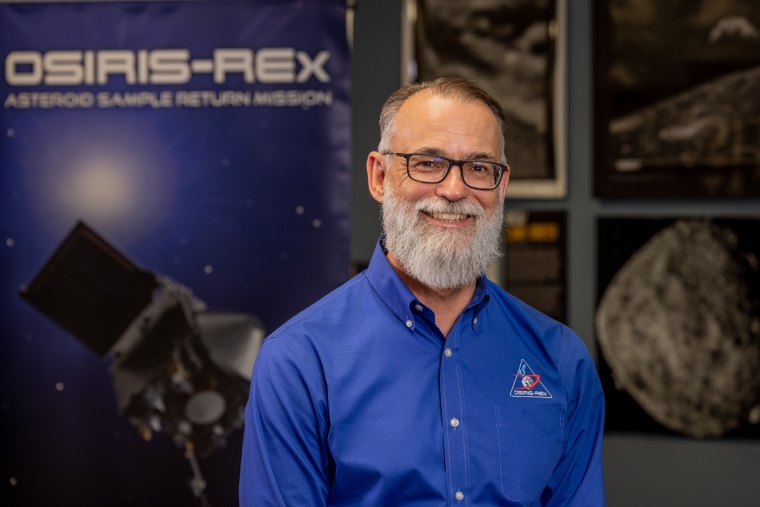 Dante Lauretta is the director of the Arizona Astrobiology Center director and principal investigator for NASA's OSIRIS-REx mission.Chris Richards/University Communications
Dante Lauretta is the director of the Arizona Astrobiology Center director and principal investigator for NASA's OSIRIS-REx mission.Chris Richards/University Communications
Dante Lauretta, Regents Professor of planetary sciences at the UArizona Lunar and Planetary Laboratory and principal investigator for NASA's OSIRIS-REx mission, is the center director.
"The formation of the center signifies our passion for unraveling the profound mysteries of our universe and our unwavering commitment to understanding the origin of life, the incredible story of our solar system's birth and the quest to find life elsewhere in the galaxy," Lauretta said. "Together, we embark on this exciting journey to explore the cosmos while also engaging with communities to illuminate the wonders of life."
UArizona's highly regarded astrobiology education program offers students the opportunity to explore the universe's grand questions, Lauretta said. The program spans six departments, including astronomy, chemistry and biochemistry, ecology and evolutionary biology, geosciences, molecular and cellular biology and planetary sciences.
 Corey Knox is the Arizona Astrobiology Center deputy director
Corey Knox is the Arizona Astrobiology Center deputy director
But the Arizona Astrobiology Center's reach extends beyond these departments. Part of what the center will explore – in addition to life's origins and existence on other worlds – is what such discoveries might mean to different cultures and traditions around the world. The center also seeks to share these grand ideas through public engagement efforts, said the center's deputy director, Corey Knox.
"The University of Arizona is renowned for pioneering research, especially in planetary sciences. With the establishment of the Arizona Astrobiology Center, our faculty and students will be looking at the universe, life and humanity through a new lens that combines scientific expertise with scholarship in humanities, fine arts and other disciplines," said University of Arizona President Robert C. Robbins. "The knowledge and discoveries that result from this collaboration are sure to be transformational, and Dante Laurette is the right person to lead the way. I am proud that the University of Arizona is a place where this kind of exploration is possible."
A broad approach to big questions
Sawsan Wehbi, a graduate student studying genetics and astrobiology, is collaborating with Lauretta to understand how asteroids like Bennu could have seeded early life on Earth.
Wehbi said she's eager to connect not only with faculty through the center, but also with other students involved in astrobiology research.
"As a biologist approaching the question of life's origins, I've found that I have so much in common with the geology majors who investigate rock formations and compositions of hydrothermal vent systems and the astronomy majors working on protoplanetary systems and near-Earth asteroids," she said. "We get to discuss these fundamental questions from different angles, which is at the heart of this interdisciplinary science."
Center members are also exploring topics and methods of inquiry that extend beyond traditional astrobiology.
Solange Duhamel, an associate professor of molecular and cellular biology, studies how aquatic microbes adapt to extreme environments on Earth. Her work explores how life might arise on other worlds.
For Ken McAllister, Sumayya Granger and Judd Ruggill – College of Humanities faculty members who study the speculative field of xenolinguistics, or extraterrestrial languages – the center will serve as a hub where they can discuss their ideas and be involved in the "center's collaborative, transdisciplinary and forward-looking efforts," said McAllister, who is the college's associate dean for research and program innovation.
"The college specializes in research related to intercultural knowledge and fluency, multilingualism, translation and interpretation, and applied linguistics, including xenolinguistics," he said. "The prospect of exploring ways to transform the terrestrial humanities into disciplines encompassing universal scales would be exceptionally difficult to pursue in isolation. The center will significantly reduce the difficulty of pursuing such work and open new doors to grant funding, community engagement and curriculum development."
Ellen McMahon's research focuses on how the arts work to help us make sense of ourselves, our situations and our surroundings. As associate dean for research in the College of Fine Arts and member of the center, she will facilitate projects at the intersection of art and astrobiology that make scientific findings about humanity's place in the universe relatable for a broad and inclusive audience, which is one of the center's primary goals.
"Art provides unique opportunities for embodied experiences, enabling individuals to make sense of the vast expanse of cosmic knowledge we encounter daily," McMahon said. "This function of art – to help us feel what we know and know how we feel – is critical for the individual and social change needed to rise to the challenges facing our species here on Earth."
Deputy director Knox, an educational researcher and cultural studies scholar, focuses on the inclusion, expansion and transformation of science education and engagement. She thinks that astrobiology is perfectly suited to engage diverse audiences both in and beyond academia.
"The center's mission is to make astrobiology relevant to everyone," Knox said. "In a way, it's all about origins stories: Where did we come from? How did we get here? It will be exciting to engage in discussions and discoveries with people across disciplines, cultures and backgrounds."
Student-powered from day one
While the Arizona Astrobiology Center will be a hub for diverse scientific endeavors and dialogue, its faculty will also nurture the next generation of astrobiologists, scientists, thinkers and creators, Lauretta said.
"For students fortunate enough to be a part of this visionary institution, the opportunities are nothing short of extraordinary," Lauretta said. "From day one, they'll find themselves immersed in the heart of groundbreaking scientific endeavors, collaborating alongside world-renowned faculty and fellow students from diverse disciplines. They will have the chance to work on projects at the forefront of astrobiology, from decoding the secrets of asteroids like Bennu to exploring the possibilities of life beyond Earth's boundaries."
The Arizona Astrobiology Center is also committed to fostering a culture of community engagement, enabling students to share their passion for science with the public. In fact, the astrobiology ambassadors club has already begun outreach efforts. More than a dozen undergraduate and graduate students helped design and staff an event at the Children's Museum Tucson on Sept. 24, when the OSIRIS-REx sample landed on Earth.
"Answering some of the kids' questions about space, life and the mission was truly exhilarating," said Wehbi, a member of the astrobiology club. "Community outreach is another big reason why I'm excited to be part of the center."
UArizona faculty, staff, students and community members can participate in the center in many ways, including through seminars and research partnerships, and also by designing, supporting and attending programs and events.
UArizona Launches Arizona Astrobiology Center to Unlock the Mysteries of Life in the Universe
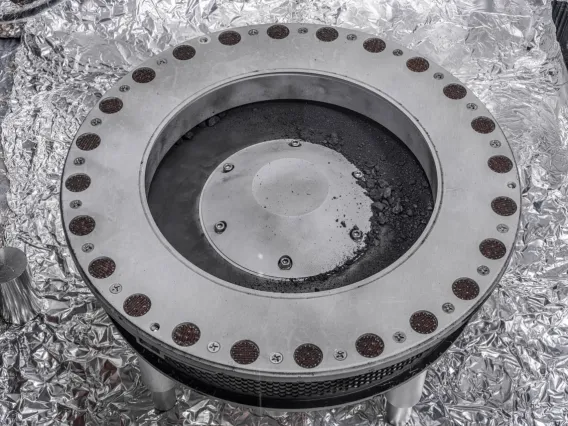
First Look at Bennu Sample Reveals Carbon and Water
NASA's University of Arizona-led OSIRIS-REx mission has returned a sample that scientists will study for decades to learn more about the formation of the solar system.First Look at Bennu Sample Reveals Carbon and Water
×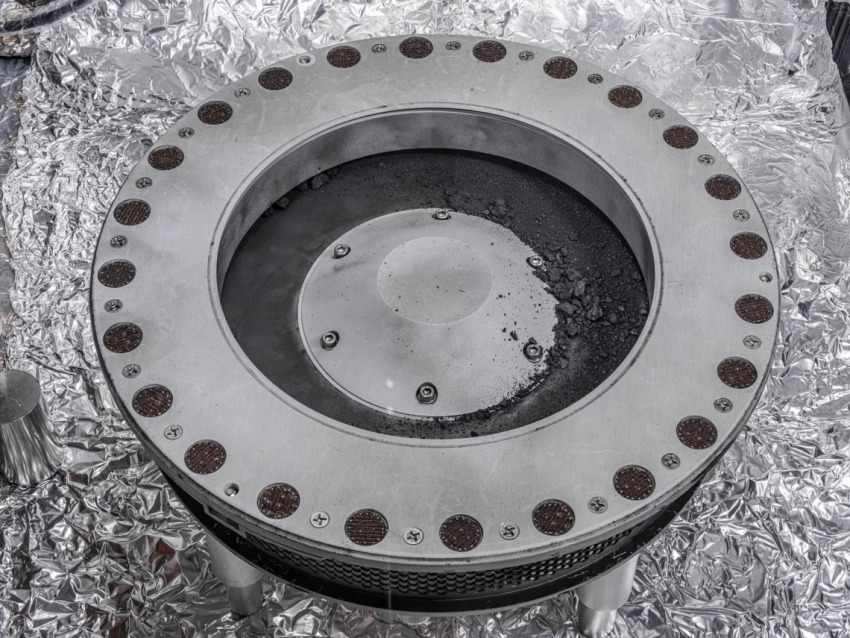
By NASA and University Communications - October 11, 2023
Initial studies of the 4.5-billion-year-old asteroid Bennu sample collected in space and brought to Earth by NASA's University of Arizona-led OSIRIS-REx mission show evidence of water and high-carbon content, which together could indicate the building blocks of life on Earth may be found in the rock.
NASA announced the finding Wednesday from its Johnson Space Center in Houston, where leadership and scientists showed off the asteroid material for the first time since it landed in the Utah desert on Sept. 24. The finding was part of a preliminary assessment of the OSIRIS-REx science team.
"As we peer into the ancient secrets preserved within the dust and rocks of asteroid Bennu, we are unlocking a time capsule that offers us profound insights into the origins of our solar system," said Dante Lauretta, OSIRIS-REx principal investigator and UArizona Regents Professor of Planetary Sciences. "The bounty of carbon-rich material and the abundant presence of water-bearing clay minerals are just the tip of the cosmic iceberg. These discoveries, made possible through years of dedicated collaboration and cutting-edge science, propel us on a journey to understand not only our celestial neighborhood but also the potential for life's beginnings. With each revelation from Bennu, we draw closer to unraveling the mysteries of our cosmic heritage."
 Dante Lauretta (center), OSIRIS-REx principal investigator and UArizona Regents Professor of Planetary Sciences, speaks during a press conference announcing the first discoveries from the Bennu asteroid sample at NASA's Johnson Space Center on Wednesday. Other panelists, from left, are Lori Glaze, NASA's Science Mission Directorate's Planetary Science Division director; OSIRIS-REx sample analysis lead Daniel Glavin; OSIRIS-REx deputy curation lead Francis McCubbin; and NASA Administrator Bill Nelson.Chris Richards/University of Arizona
Dante Lauretta (center), OSIRIS-REx principal investigator and UArizona Regents Professor of Planetary Sciences, speaks during a press conference announcing the first discoveries from the Bennu asteroid sample at NASA's Johnson Space Center on Wednesday. Other panelists, from left, are Lori Glaze, NASA's Science Mission Directorate's Planetary Science Division director; OSIRIS-REx sample analysis lead Daniel Glavin; OSIRIS-REx deputy curation lead Francis McCubbin; and NASA Administrator Bill Nelson.Chris Richards/University of Arizona
Although more work is needed to understand the nature of the carbon compounds found, the initial discovery bodes well for future analyses of the asteroid sample. The secrets held within the rocks and dust from the asteroid will be studied for decades to come, offering insights into how our solar system was formed, how the precursor materials to life may have been seeded on Earth, and what precautions need to be taken to avoid asteroid collisions with our home planet.
"The OSIRIS-REx sample is the biggest carbon-rich asteroid sample ever delivered to Earth and will help scientists investigate the origins of life on our own planet for generations to come," said NASA Administrator Bill Nelson. "Almost everything we do at NASA seeks to answer questions about who we are and where we come from. NASA missions like OSIRIS-REx will improve our understanding of asteroids that could threaten Earth while giving us a glimpse into what lies beyond. The sample has made it back to Earth, but there is still so much science to come – science like we've never seen before."
Bonus sample material
The goal of the OSIRIS-REx sample collection was 60 grams of asteroid material. Curation experts at NASA Johnson, working in new clean rooms built especially for the mission, have spent 10 days so far carefully disassembling the sample return hardware to obtain a glimpse at the bulk sample within. When the science canister lid was first opened, scientists discovered bonus asteroid material covering the outside of the collector head, canister lid and base. There was so much extra material it slowed down the careful process of collecting and containing the primary sample.
"Our labs were ready for whatever Bennu had in store for us," said Vanessa Wyche, NASA Johnson director. "We've had scientists and engineers working side-by-side for years to develop specialized gloveboxes and tools to keep the asteroid material pristine and to curate the samples so researchers now and decades from now can study this precious gift from the cosmos."
Within the first two weeks, scientists performed "quick-look" analyses of that initial material, collecting images from a scanning electron microscope, infrared measurements, X-ray diffraction and chemical element analysis. X-ray computed tomography was also used to produce a 3D computer model of one of the particles, highlighting its diverse interior. This early glimpse provided the evidence of abundant carbon and water in the sample.
For the next two years, the mission's science team will continue characterizing the samples and conducting the analysis needed to meet the mission's science goals. NASA will preserve at least 70% of the sample at Johnson for further research by scientists worldwide, including future generations of scientists.
As part of OSIRIS-REx's science program, a cohort of more than 200 scientists around the world will explore the regolith's properties, including researchers from many U.S. institutions, NASA partners at the Japan Aerospace Exploration Agency, the Canadian Space Agency, and other scientists from around the world. Additional samples will also be loaned later this fall to the Smithsonian Institution, Space Center Houston, and UArizona's Alfie Norville Gem & Mineral Museum.
First Look at Bennu Sample Reveals Carbon and Water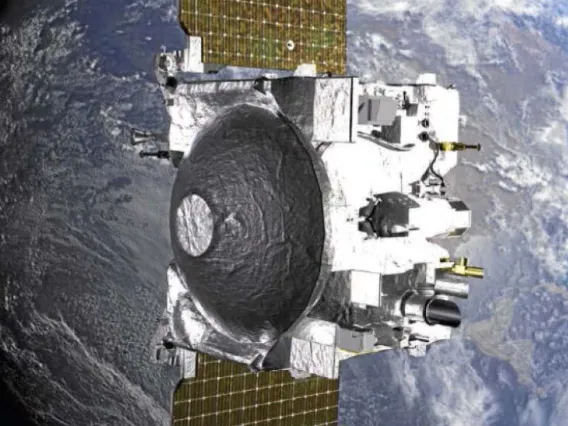
Tucson-born Asteroid Mission Keeps Flying
The moment the OSIRIS-REx spacecraft released the capsule filled with rocks and dust from asteroid Bennu, Daniella DellaGiustina, assistant professor at Lunar and Planetary Laboratory, assumed command of the robotic probe.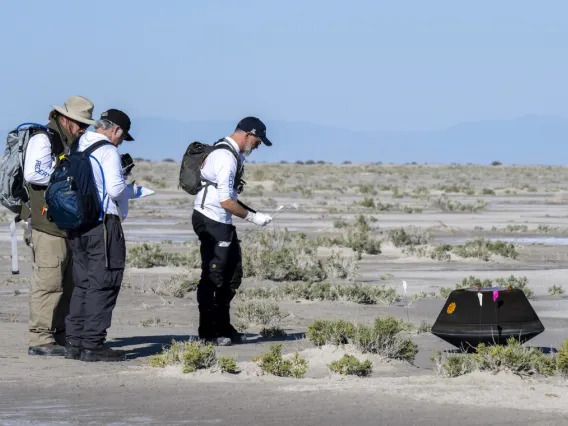
A Gift from Space: UArizona-led OSIRIS-REx Mission Delivers Largest-ever Asteroid Sample to Earth
The delivery from the asteroid Bennu, seven years after the spacecraft launched, marks the end of the space-voyaging phase of the mission. Scientists will now study the rocks and dust to better understand the origins of life on Earth.A Gift from Space: UArizona-led OSIRIS-REx Mission Delivers Largest-ever Asteroid Sample to Earth
×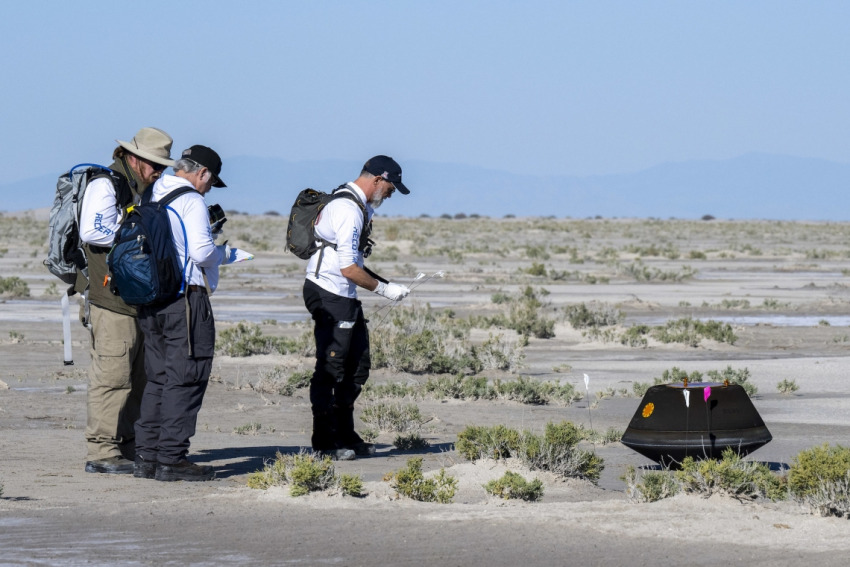
By Lonnie Shekhtman, NASA, and Daniel Stolte, University Communications - September 24, 2023
After years of anticipation and hard work by the mission team, the University of Arizona-led NASA OSIRIS-REx mission has successfully landed a capsule with rocks and dust from the asteroid Bennu in the Utah desert.
 The OSIRIS-REx sample return capsule lying near its parachute shortly after touching down in the Utah desert. NASA/Keegan Barber
The OSIRIS-REx sample return capsule lying near its parachute shortly after touching down in the Utah desert. NASA/Keegan Barber
The capsule landed at 8:52 a.m. Mountain Daylight Time – 7:52 a.m. in Tucson – on Sunday, in a targeted area of the Department of Defense's Utah Test and Training Range, or UTTR, 80 miles southwest of Salt Lake City.
Dante Lauretta, principal investigator for OSIRIS-REx at UArizona, was among the first people to approach the sample return capsule after it landed.
"It was like seeing an old friend that you hadn't seen for a long time," Lauretta said during a post-landing press conference hosted by NASA at UTTR. "I did want to give it a hug."
Remembering the late Michael Drake, Lauretta said his former mentor and head of the UArizona Lunar and Planetary Laboratory who first came up with the mission concept "would have been proud today."
"I was there when the capsule was nothing but a PowerPoint on a slide in a proposal that we were submitting to NASA," Lauretta said. "It was amazing and emotional."
According to Lauretta, the capsule didn’t bounce, didn't skid, made only a tiny divot and came to rest gently, tipped on its side.
"Boy, did we stick that landing," he said, "and that is pretty much what OSIRIS-REx has done consistently."
Within an hour and a half, the capsule was transported by helicopter to a temporary clean room set up in a hangar on the training range, where it now is under supervision and connected to a continuous flow of nitrogen.
Getting the sample under a "nitrogen purge," as scientists call it, was one of the OSIRIS-REx team's most critical tasks today. Nitrogen is a gas that doesn't interact with most other chemicals, and a continuous flow of it into the sample container inside the capsule will keep out earthly contaminants to leave the sample pure for scientific analyses.
The Bennu sample – an estimated 8.8 ounces, or 250 grams – will be transported in its unopened canister by aircraft to NASA's Johnson Space Center in Houston on Monday, Sept. 25. Curation scientists there will disassemble the canister, extract and weigh the sample, create an inventory of the rocks and dust, and, over time, distribute pieces of Bennu to scientists worldwide.
The sample collected from Bennu will help scientists make discoveries to better understand planet formation and the origin of organics and water that led to life on Earth, as well as benefit all of humanity by learning more about potentially hazardous asteroids.
 A crowd, including University of Arizona President Robert C. Robbins, cheers as the OSIRIS-REx sample return capsule touches down. Chris Richards/University Communications
A crowd, including University of Arizona President Robert C. Robbins, cheers as the OSIRIS-REx sample return capsule touches down. Chris Richards/University Communications
Today's delivery of an asteroid sample – a first for the U.S. – went according to plan thanks to the massive effort of hundreds of people who remotely directed the spacecraft's journey since it launched on Sept. 8, 2016. The team then guided it to arrival at Bennu on Dec. 3, 2018, followed by the search for a safe sample-collection site in 2019 and 2020, sample collection on Oct. 20, 2020, and the return trip home starting on May 10, 2021.
"Congratulations to the OSIRIS-REx team on a picture-perfect mission – the first American asteroid sample return in history – which will deepen our understanding of the origin of our solar system and its formation,” said NASA Administrator Bill Nelson. “Not to mention, Bennu is a potentially hazardous asteroid, and what we learn from the sample will help us better understand the types of asteroids that could come our way. With OSIRIS-REx, Psyche launch in a couple of weeks, DART's one-year anniversary, and Lucy's first asteroid approach in November, Asteroid Autumn is in full swing.
“These missions prove once again that NASA does big things. Things that inspire us and unite us. Things that show nothing is beyond our reach when we work together."
UArizona leads the OSIRIS-REx mission's science team and science observation planning and data processing. NASA Goddard provides overall mission management, systems engineering, and the safety and mission assurance.
After traveling billions of miles to Bennu and back, the OSIRIS-REx spacecraft released its sample capsule toward Earth's atmosphere at 3:42 a.m. Tucson time. The spacecraft was 63,000 miles, or 102,000 kilometers, from Earth's surface at the time – about one-third the distance from Earth to the moon.
Once the spacecraft jettisoned the capsule, it officially began its extended mission, OSIRIS-APEX, to study and map another potentially hazardous near-Earth asteroid, called Apophis. Planetary sciences assistant professor and OSIRIS-REx deputy principal investigator Dani DellaGiustina will serve as principal investigator for OSIRIS-APEX.
Traveling at 27,650 mph (44,500 kph), the capsule pierced the atmosphere at 7:42 a.m. Tucson time, off the coast of California at an altitude of about 83 miles (133 kilometers). Within 10 minutes, it landed on the military range. Along the way, two parachutes successfully deployed to stabilize and slow the capsule down to a gentle 11 mph (18 kph) at touchdown.
"The whole team had butterflies today, but that's the focused anticipation of a critical event by a well-prepared team," said Rich Burns, project manager for OSIRIS-REx at NASA's Goddard Space Flight Center in Greenbelt, Maryland. "For us, this was the World Series, ninth inning, bases-loaded moment, and this team knocked it out of the park."
Radar, infrared and optical instruments in the air and on the ground tracked the capsule to its landing coordinates inside a 36-mile by 8.5-mile (58-kilometer by 14-kilometer) area on the range. Within several minutes, the recovery team was dispatched to the capsule's location to inspect and retrieve it. The team found the capsule in good shape at 8:07 a.m. Tucson time and then determined it was safe to approach. Within 70 minutes, they wrapped it up for safe transport to the clean room on the range.
 Lauretta victoriously returns from the field where he and other scientists sampled the immediate environment around the sample return capsule before towing it away by helicopter. Chris Richards/University Communications
Lauretta victoriously returns from the field where he and other scientists sampled the immediate environment around the sample return capsule before towing it away by helicopter. Chris Richards/University Communications
Even with a series of rehearsals preceding today's capsule recovery operations, Lauretta said there were heart-pounding moments during the helicopter ride out to the landing area, and he admits he was mentally preparing himself for the worst-case scenario – a hard landing in the event the main parachute had not opened as planned. It was hard to hear the status updates, he said, and he did not have access to NASA's live video feed.
"I told myself, 'You've got to keep it together when you get out of this helicopter, deal with whatever is there and then mourn if that's what you are going to have to do,'" Lauretta said.
"As soon as I heard 'main chute,' that's when I just emotionally let it go," he added. "Tears were streaming down my eyes, and I thought, 'That's the only thing I needed to hear.' From this point on, we know what to do, we're home, we're safe, we did it."
According to Lauretta, today marks an extraordinary milestone not just for the OSIRIS-REx team but for science as a whole.
"Successfully delivering samples from Bennu to Earth is a triumph of collaborative ingenuity and a testament to what we can accomplish when we unite with a common purpose," he said. "But let's not forget – while this may feel like the end of an incredible chapter, it's truly just the beginning of another. We now have the unprecedented opportunity to analyze these samples and delve deeper into the secrets of our solar system."
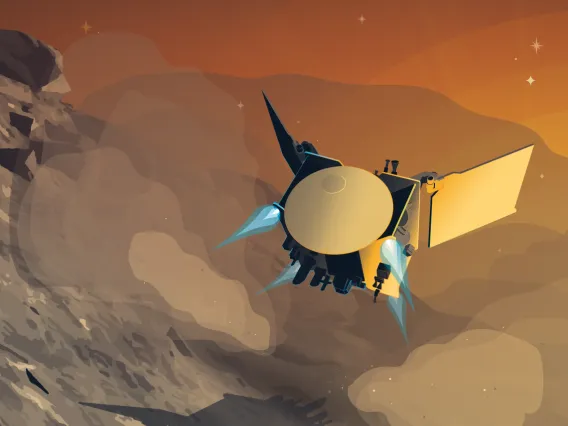
OSIRIS-REx's Successful Sample Delivery Marks the Start of Extended OSIRIS-APEX Mission
After dropping off its historic sample from asteroid Bennu, the OSIRIS-REx spacecraft is headed to its next target: another potentially hazardous near-Earth asteroid, called Apophis.OSIRIS-REx's Successful Sample Delivery Marks the Start of Extended OSIRIS-APEX Mission
×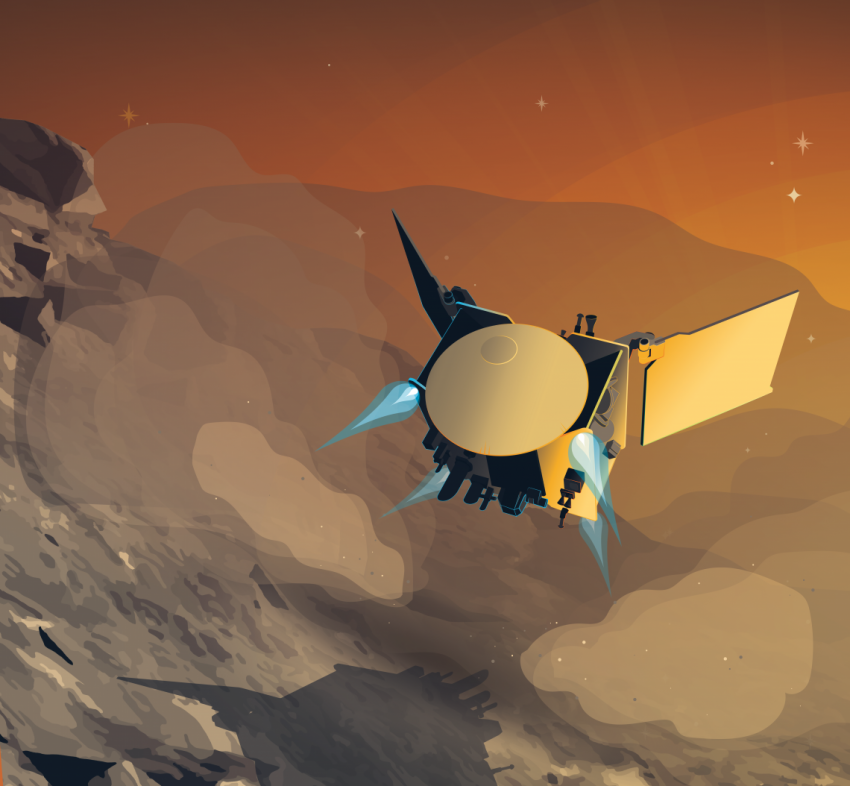
By Mikayla Mace Kelley, University Communications - September 24, 2023
NASA's OSIRIS-REx mission just made history as the first U.S. mission deliver a piece of an asteroid to Earth. The mission, led by the University of Arizona, launched in 2016 and has traveled over 4 billion miles before returning home. Now its next journey begins.
After jettisoning its sample return capsule in the Utah desert, OSIRIS-REx fired its thrusters to put the spacecraft on course to rendezvous with another potentially hazardous near-Earth asteroid, called Apophis. NASA renamed the extended mission OSIRIS-APEX, short for OSIRIS-APophis EXplorer.
While the spacecraft's mechanisms are no longer in place to collect another sample, the UArizona-led science team will study and map the asteroid in great detail. What the team learns will further enrich our understanding of the early solar system and potentially hazardous asteroids.
 OSIRIS-APEX mission principal investigator Dani DellaGiustina.Chris Richards/University Communications
OSIRIS-APEX mission principal investigator Dani DellaGiustina.Chris Richards/University Communications
Planetary sciences assistant professor and OSIRIS-REx deputy principal investigator Dani DellaGiustina will serve as principal investigator for OSIRIS-APEX.
DellaGiustina started working on the OSIRIS-REx mission in 2006 as an undergraduate student. She left to pursue a master's degree before returning and being hired on as the lead imaging scientist on the mission while simultaneously obtaining a doctorate from the UArizona Department of Geosciences. In 2021, she became OSIRIS-REx's deputy principal investigator.
"All we learned during our time at Bennu will inform the questions we ask of Apophis," DellaGiustina said. "I'm looking forward to this next chapter and am excited to carry on the legacy of this history-making mission."
Regents Professor of Planetary Sciences at the Lunar and Planetary Laboratory Dante Lauretta will remain principal investigator of OSIRIS-REx through the remaining two-year sample analysis phase of the mission.
"I am so proud to see the long-awaited and much-anticipated sample delivery, which so many University of Arizona community members have tirelessly worked on these past many years. The OSIRIS-REx mission has already surprised us in so many ways. I know that it will continue to do so as our scientists dig into the sample and work to reveal more about the origins of the solar system and potentially life itself," said University of Arizona President Robert C. Robbins. "The OSIRIS-APEX mission will only compound the success of the OSIRIS-REx mission and continue to demonstrate to the world – especially students who want to study what lies beyond our planet – that the University of Arizona is a leader in space sciences."
After nearly six more years of travel and several laps around the sun, OSIRIS-APEX will begin snapping pictures of Apophis in early April 2029 – just a few days before the asteroid's rare close encounter with Earth, coming to within less than 20,000 miles, or one-tenth the distance between the Earth and moon. Scientists will then spend the next 18 months studying the asteroid up close.
Apophis is an "infamous" asteroid, DellaGiustina said, and while many other targets were considered, it's the perfect target for this mission.
When Apophis was first discovered in 2004, scientists studying its orbit thought it would impact Earth in 2029, but later observation ruled out that possibility. Then, scientists again thought it would strike in 2036. That also was ruled out. Further observation and tracking have now shown that Earth is safe from Apophis for at least 100 years.
While Apophis won't hit Earth any time soon, it will come very close, DellaGiustina said, and this is exactly what makes it such a rich target of study.
The mission science team plans to study how Earth's gravitational influence during this close approach changes the asteroid by disturbing the rotation rate and surface, potentially revealing what lies just beneath the surface and more about its material properties. Instruments onboard the spacecraft will snap pictures and collect data as it travels to the asteroid and will continue to monitor any changes after the close approach.
Scientists are also interested in learning more about the composition of this asteroid. OSIRIS-REx's target asteroid, Bennu, is a carbonaceous asteroid, meaning it is relatively rich in carbon-bearing materials such as organic molecules. Apophis, on the other hand, is expected to be poor in carbon-bearing materials and water and is slightly smaller than Bennu. Both are about 1,500 feet at their widest points.
The knowledge gleaned from the Apophis rendezvous will inform scientific understanding of potentially hazardous asteroids and how to protect against future collisions with these solar system wanderers.
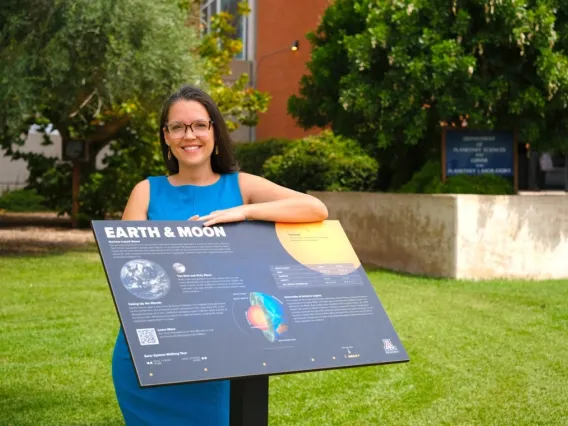
Take a Stroll Through the Solar System – on the UArizona Campus
Designed objects true to scale, 11 plaques have been installed across campus as part of of an outreach project to make space science accessible to people of all ages.Take a Stroll Through the Solar System – on the UArizona Campus
×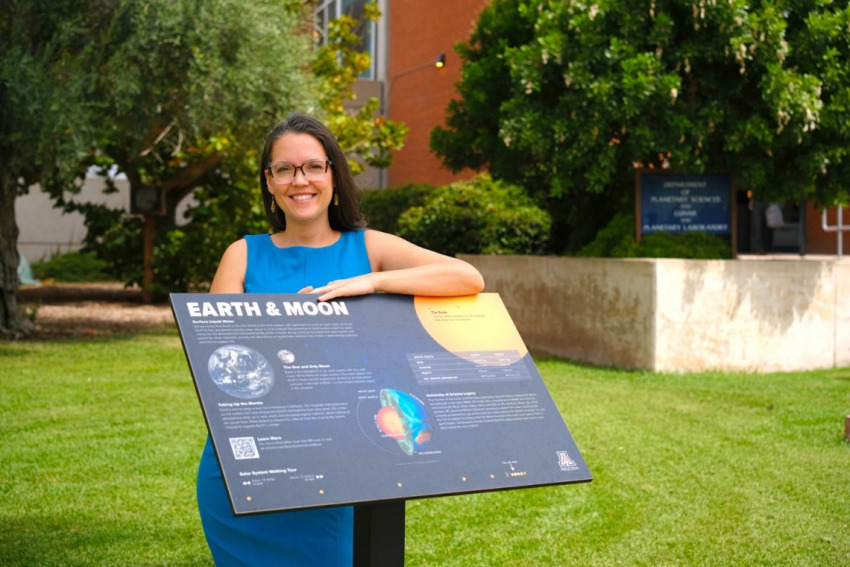
By Daniel Stolte, University Communications - September 12, 2023
Thanks to a University of Arizona student and her childhood dream, visitors to the UArizona campus now can take a walk through the solar system at the same time.
Zarah Brown, a doctoral student at the UArizona Lunar and Planetary Laboratory, led the installation of 11 plaques depicting various objects of the solar system true to scale. Designed to show the relative sizes and distances of solar system objects at a 1:5 billion scale, the outreach project aims to make space science accessible to people of all ages and backgrounds and to highlight UArizona's accomplishments exploring the solar system.
Dedicated with a ribbon-cutting ceremony on Sept. 8, the stations comprising the Arizona Scale Model Solar System are spaced out across two-thirds of a mile of campus between the Kuiper Space Sciences Building and the intersection of East University Boulevard and North Euclid Avenue.
A project website, accessible by QR codes at each stop, will provide information via screen readers for the visually impaired, as well as additional details as new scientific discoveries are made.
The project is the result of collaborative efforts made possible by the support of the NASA Space Grant program and an anonymous benefactor.
Brown talked to University of Arizona News about her childhood dream, what drove her to make it a reality and what sets the Arizona Scale Model Solar System apart from similar installations.
Q: How did you get the idea for this project?
A: I wanted to do this for a really long time. In second grade, I had a poster of the solar system that I loved, and it had all of the numbers on there, all of the planets, their sizes and their distances. And that was great, except they all were represented at the same size and distance from each other, and I thought, "I want this to be right. I want it to look right." So I decided to draw my own solar system model on a sheet of paper. I had my little calculator out, and I was figuring it out. And soon I was like, "Oh, my goodness, I'm going to need another sheet of paper” the farther out I got into the solar system. At some point I said, "Dad! I need more paper." I needed a ream of paper to get to the end of the solar system, and that was just mind-blowing at that young age. Since then, I've always found that experience to be just so compelling and fascinating and wonderful. It had me totally rethink who I am, how big our planet is, and how vast space is.
 A young visitor spots Bennu, the target asteroid of the UArizona-led OSIRIS-REx mission, on the plaque featuring the asteroid belt, which is located at the entrance of the Flandrau Science Center and Planetarium.Daniel Stolte/University Communications
A young visitor spots Bennu, the target asteroid of the UArizona-led OSIRIS-REx mission, on the plaque featuring the asteroid belt, which is located at the entrance of the Flandrau Science Center and Planetarium.Daniel Stolte/University Communications
Q: What can you tell us about the design of the plaques?
A: They are 30 inches wide and 20 inches tall, and each of them has a depiction of the solar system object silhouetted against the sun, at the same scale, so you can see how big the planet is compared to the sun. The plaques provide details on the mass, diameter, surface gravity and temperature of various solar system objects, as well as stories about related University of Arizona scientific contributions. The interpretive information on each plaque is complemented by NASA images and illustrations by James Keane, an alumnus of the University of Arizona Lunar and Planetary Laboratory.
Q: Can you give us a sneak preview of the objects featured in your installation?
A: The sun is located outside of the Kuiper Space Sciences building. At the scale of 1:5 billion, it measures 10.9 inches across. Next, a few steps away is Mercury, the innermost planet of the solar system. It's just a tiny dot against the sun, and because it is so close to it, it's a hot, dry planet with no atmosphere. Any atmosphere it might have had when it formed would have long been stripped away by the sun.
Across from Mercury, on the other side of the walkway leading up to the front of the building is Venus. Next, a few steps to the west, is a plaque for the Earth and the moon. From here, you can see the "moon tree" in the background, which is kind of neat, because that's the tree that went to the moon as a seed during the Apollo missions and then came back and was planted here. If you continue walking westward, you'll encounter Mars at the walkway up to Flandrau Science Center, followed by a big gap before we reach Jupiter in front of the Sonett Space Science Building. In that gap, a plaque for the asteroid belt was placed at the corner of University Boulevard and Cherry Avenue. The asteroid belt isn't typically featured in solar system scale models, but given all of our wonderful work around asteroids, most notably the OSIRIS-REx sample return mission, we thought it would be very important to include the asteroid belt.
Passing Jupiter, we continue to walk westward until we reach the Modern Languages Building, where we encounter Saturn, which happens to be my favorite planet. As we keep walking past the Student Union, we arrive at the plaque for Uranus, just north of Old Main. By the time we reach Neptune, the outermost of the planets, we are at the edge of campus on the opposite end of where we started. That planet's plaque is located just east of the stone wall at Main Gate.
Q: What about Pluto, the dwarf planet that is no longer recognized as a "proper" planet?
A: We have slated a home for Pluto along the pedestrian walkway amid the shops near University Boulevard and Euclid Avenue. This property is owned by the Marshall Foundation, which aims to support education for children and young adults in the Tucson community.
Q: Who provided the content? Did you write all of the narratives?
A: I know that I'm not an expert in every single object in our solar system, so I had a team of about 10 graduate students in LPL (the Lunar and Planetary Laboratory) who helped me write an initial draft focusing on which aspects of each object are the most interesting and outlining some of the facts.
Q: What do you hope to accomplish with this project?
A: My main goal is to have the wonder of the universe that we live in be more accessible to anyone who comes to campus. I'm really passionate about science being accessible to the public. I think that sometimes scientists get very focused on their aspect of research, and we don't always do the best at translating what we're learning to everyone. I also hope that seeing how small the Earth is compared to the vastness of space might give people the type of perspective that would have them see how precious our planet is and how precious one another are.
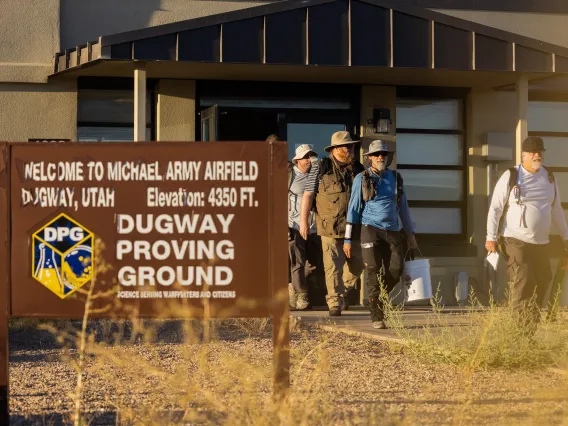
Preparing to Welcome an Asteroid Sample
On the morning of Aug. 29, outside a hangar on the U.S. Army's Dugway Proving Ground in the high mountain desert of central Utah, members of NASA's OSIRIS-REx sample recovery team began a two-day "dress rehearsal" – their last opportunity to perfect procedures before the first extraterrestrial samples collected beyond the orbit of the moon are expected to land on Earth on Sept. 24.Preparing to Welcome an Asteroid Sample
×
By University Communications - August 31, 2023
On the morning of Aug. 29, outside a hangar on the U.S. Army's Dugway Proving Ground in the high mountain desert of central Utah, members of NASA's OSIRIS-REx sample recovery team began a two-day "dress rehearsal" – their last opportunity to perfect procedures before the first extraterrestrial samples collected beyond the orbit of the moon are expected to land on Earth on Sept. 24.
Currently on its way to Earth, NASA's OSIRIS-REx spacecraft is carrying a capsule containing an estimated 8.8 ounces of rocky material collected from the surface of asteroid Bennu in 2020. Researchers will study the sample in the coming years to learn about how our planet and solar system formed and about the origin of organics that may have led to life on Earth.
Mission principal investigator Dante Lauretta, University of Arizona Regents Professor of Planetary Sciences and a member of the sample recovery team, was brimming with anticipation during the critical practice run.
"I wanted to personally be out there to greet these pieces of Bennu to our home planet," he said during a news conference hosted by NASA's Goddard Space Flight Center following the completion of the two-day rehearsal. "I want to welcome them to the curation facility at Johnson Space Center and get them ready for the adventure we're about to put them on."
Part of that adventure, Lauretta said, will take place at the University of Arizona, where scientists and experts have been busy building world-class laboratory instruments, including state-of-the-art electron microscopes, ion microprobes and a whole suite of ancillary equipment that can extract a wealth of information from even the smallest pieces of asteroid material.
One of the mission's biggest surprises came when the spacecraft's sampling arm extended into the asteroid surface during sample collection and encountered almost no resistance, said Lauretta, who likes to call Bennu the "trickster asteroid."
"It has challenged us every step of the way," he said. "We thought we were going to touch down on a solid surface, but it responded actually more like a fluid, like if you dropped yourself in a ball pit at a children's playground."
The good news, he said, is that because of that soft surface, the OSIRIS-REx spacecraft was able to collect an "enormous amount of material."
"We believe that we have at least four times as much material in that sample return capsule as we promised NASA when we designed the mission," Lauretta said. "More than 8 ounces, or about 250 grams, and boy, is the science team excited to get that."

OSIRIS-REx Team Completes Final Test Before Asteroid Sample Delivery
The OSIRIS-REx spacecraft will deliver a sample from asteroid Bennu to scientists waiting in the Utah desert on Sept. 24.OSIRIS-REx Team Completes Final Test Before Asteroid Sample Delivery
×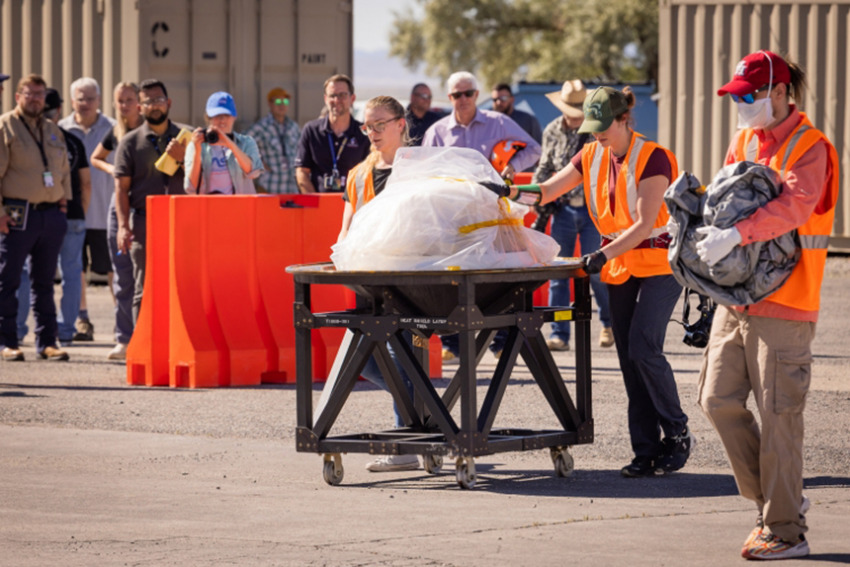
Members of the sample curation team wheel the capsule into the cleanroom after it was delivered from its landing spot in the desert. Chris Richards/University Communications
By University Communications and NASA Goddard Space Flight Center - September 1, 2023
Members of NASA's OSIRIS-REx asteroid sample recovery team gathered in Utah's West Desert this week to participate in final preparations for the arrival of the first U.S.-collected asteroid sample, slated to land on Earth later this month.
The team includes mission principal investigator Dante Lauretta, a University of Arizona Regents Professor of Planetary Sciences, and Anjani Polit, a senior systems engineer with the university's Lunar and Planetary Laboratory who serves as mission implementation systems engineer for the OSIRIS-REx mission.
A mockup of the OSIRIS-REx sample capsule was dropped from an aircraft Wednesday and landed at the drop zone at the Department of Defense's Utah Test and Training Range in the desert outside Salt Lake City. This was part of the mission's final major test prior to the Sept. 24 arrival of the actual capsule containing a sample of asteroid Bennu collected in space almost three years ago.
"We are now mere weeks away from receiving a piece of solar system history on Earth, and this successful drop test ensures we're ready," said Nicola Fox, associate administrator of NASA's Science Mission Directorate in Washington, D.C.
The drop test followed a series of earlier rehearsals – focused on capsule recovery, spacecraft engineering operations and sample curation procedures – conducted in the spring and earlier this summer.
NASA's OSIRIS-REx spacecraft collected a sample from asteroid Bennu in October 2020. Stowed safely inside the spacecraft's sample return capsule, it will land in Utah via parachute.
Researchers will study the sample in the coming years to learn about how our planet and solar system formed and about the origin of organics that may have led to life on Earth.
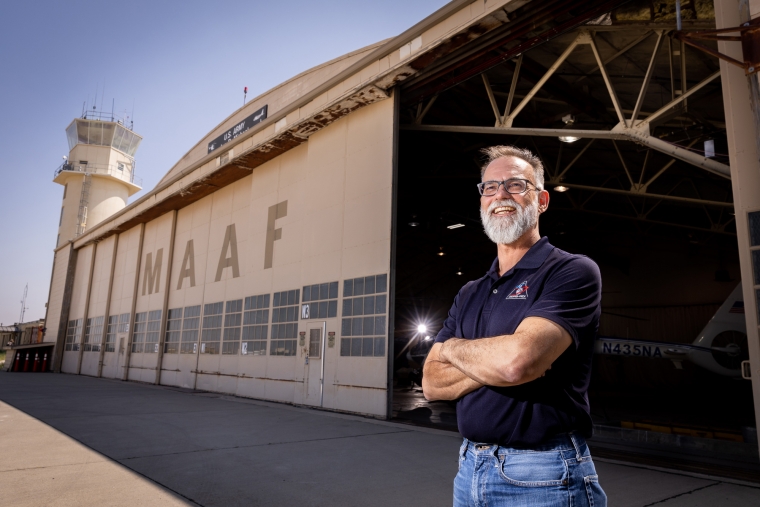 OSIRIS-REx principal investigator Dante Lauretta in front of a hangar on Michael Army Airfield on the Dugway Proving Ground after two successful days of practicing sample capsule recovery. Chris Richards/University Communications
OSIRIS-REx principal investigator Dante Lauretta in front of a hangar on Michael Army Airfield on the Dugway Proving Ground after two successful days of practicing sample capsule recovery. Chris Richards/University Communications
"We're going back to the dawn of the solar system; we're looking for clues why Earth is a habitable world," Lauretta said during a news conference following the successful drop test. "What is life, how did it originate, and why was Earth the place where it occurred? Bennu is so rich in carbonaceous compounds. We believe that we bring material that may literally be representative of the seeds of life that these asteroids delivered at the beginning of our planet."
Lauretta said the OSIRIS-REx team was convinced the spacecraft was going to touch down on a solid surface, but Bennu's surface responded more like a fluid. He likened the process to punching a ball pit at a children's playground.
"I call Bennu the 'trickster asteroid.' It has challenged us every step of the way,'" Lauretta said. "The good news is that due to that soft surface, we collected an enormous amount of material. We believe that we have at least four times as much material in that sample return capsule as we promised NASA when we designed the mission – over 8 ounces, or about 250 grams – and boy, is the science team excited to get that."
Lauretta said he is immensely proud of the efforts the team has poured into the endeavor.
OSIRIS-REx principal investigator Dante Lauretta examines a replica of the sample capsule, consisting of the heatshield (white) and the back shell (tan), following a successful drop test.Chris Richards/University Communications
"Just as our meticulous planning and rehearsal prepared us to collect a sample from Bennu, we have honed our skills for sample recovery," he said.
The capsule will enter Earth's atmosphere on Sept. 24 at 10:42 a.m. EDT (7:42 a.m. MST), traveling at about 27,650 mph. NASA's live coverage of the capsule landing starts at 10 a.m. EDT (7 a.m. MST) and will air on NASA TV, the NASA app and the agency website.
Once located and packaged for travel, the capsule will be flown to a temporary clean room on the military range, where it will undergo initial processing and disassembly in preparation for its journey by aircraft to NASA's Johnson Space Center in Houston, where the sample will be documented, cared for and distributed for analysis to scientists worldwide.
"One of the best parts about being at a university and being able to lead a program like this is training the next generation," Lauretta said, noting that more than 200 undergraduate and graduate students that have contributed to the mission, working on science, engineering, marketing, graphic arts, video production and business management – "all of the skills that it takes to bring a mission like this to a close."
Now, an "army of graduate students is waiting to get involved in the sample science program," Lauretta said.
"It's really a great entry point for young people to get involved in science," he said. "They're super excited just to think that we've got these pieces of an asteroid."

